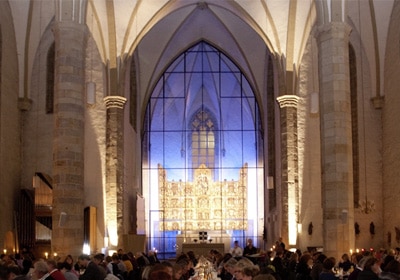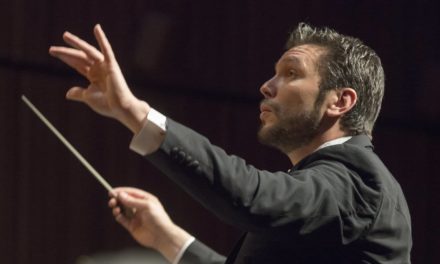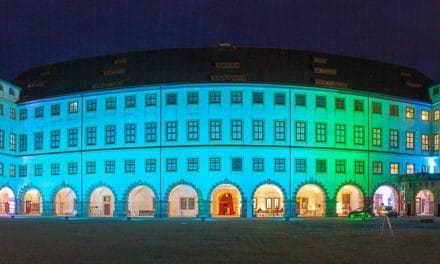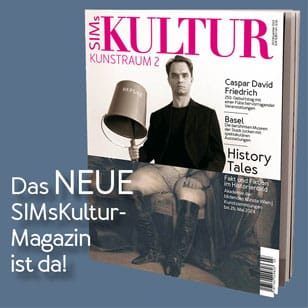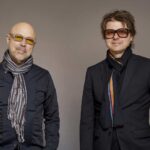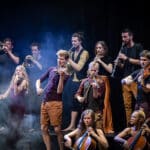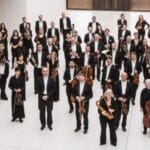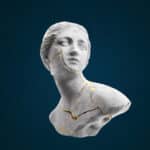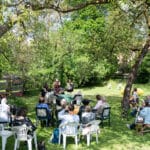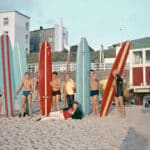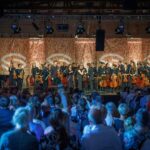For many years, St. Petri has been an open city church with a special program for people regardless of church or religious affiliation. Here, encounters take place between tradition and the present, between faith and life: City Church services, rituals and celebrations, meditation and healing, tango dancing and events in the fields of art and culture and education. Opening up to new spiritual paths and dialog with other religions is a particular concern of this church. The almost 700-year-old history of the city and faith of St. Peter's Church has left its mark on the architecture, art objects, the historic Antwerp winged altar, the "Golden Miracle" and the modern glass wall.
Anyone entering St. Petri, the clear Gothic hall building from the 2nd half of the 14th century, is surprised by its brightness and spaciousness. Daylight falls uninterrupted through the white windows. A room freed of benches draws the eye upwards into the Gothic vault. Its precious jewel is the golden Flemish winged altar in the choir. The light-flooded, wide and otherwise sparsely furnished interior also has a modern feel thanks to its flexible seating and monumental glass wall. St. Peter's - a church without niches: what is inside is not hidden, but exposed.
St. Petri exists as a sound and art space as well as a place for prayer, healing and spirituality. Visitors are not left without impressions of the different states of illumination: the lighting during celebrations around the "Labyrinth", the candlelight during the "Night of Lights", on "Tango Dance" evenings or when the "Golden Miracle" is illuminated in lapis lazuli blue on special occasions remain unforgettable experiences for guests.
Like most churches with a long history, St. Peter's also breathes the spirit of all the people who have brought their happiness and suffering to this place and before God over many centuries. This is why, even in today's pluralistic society, St. Peter's is visited by a wide variety of people who seek and want to experience depth and meaning in their lives.
St. Peter's is home to the most impressive work of art that has survived in Dortmund from the Middle Ages. The description of this winged altarpiece inevitably conjures up superlatives: it is the largest Flemish altar of the Middle Ages, one of the largest ecclesiastical sculptures of the Gothic period and one of the richest sculptural works of art in Europe.
The number of depictions is so great that one pair of wings was not enough; instead, two pairs of wings were created. This makes it possible to show the winged altar in three different states, so-called "transformations". However, people in the Middle Ages were rarely able to see most of the images, as the winged altar was mostly closed at the time. It was only opened on special liturgical occasions. The inside, decorated with hundreds of gilded figures, after which the winged altar is often referred to as "The Golden Miracle", could only be seen on a few church feast days.
With an open width of 7.4 m and a height of 5.6 m, the winged altar of St. Peter's is one of the largest carved altars in Antwerp. It was commissioned by Franciscans from Dortmund in 1522.

